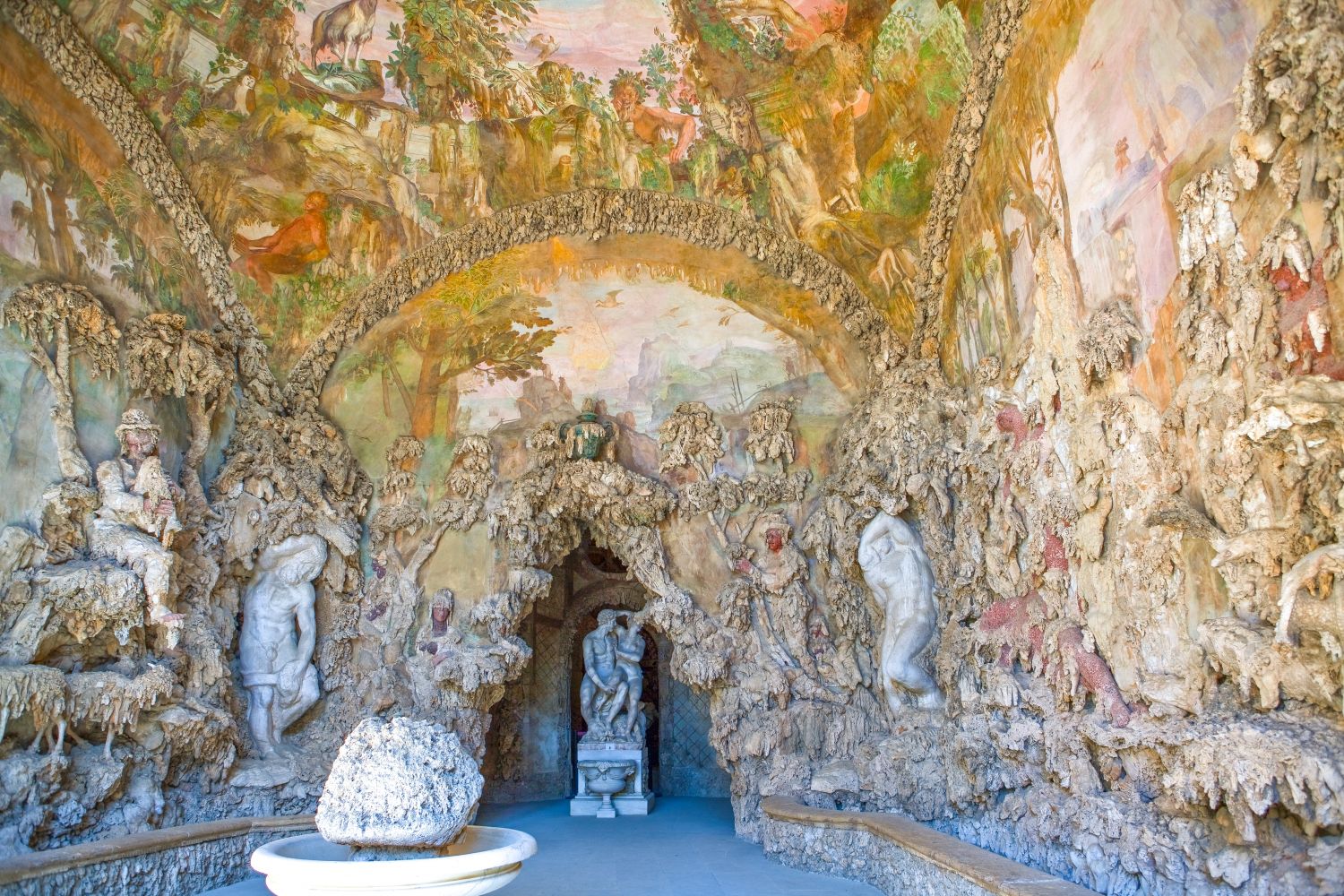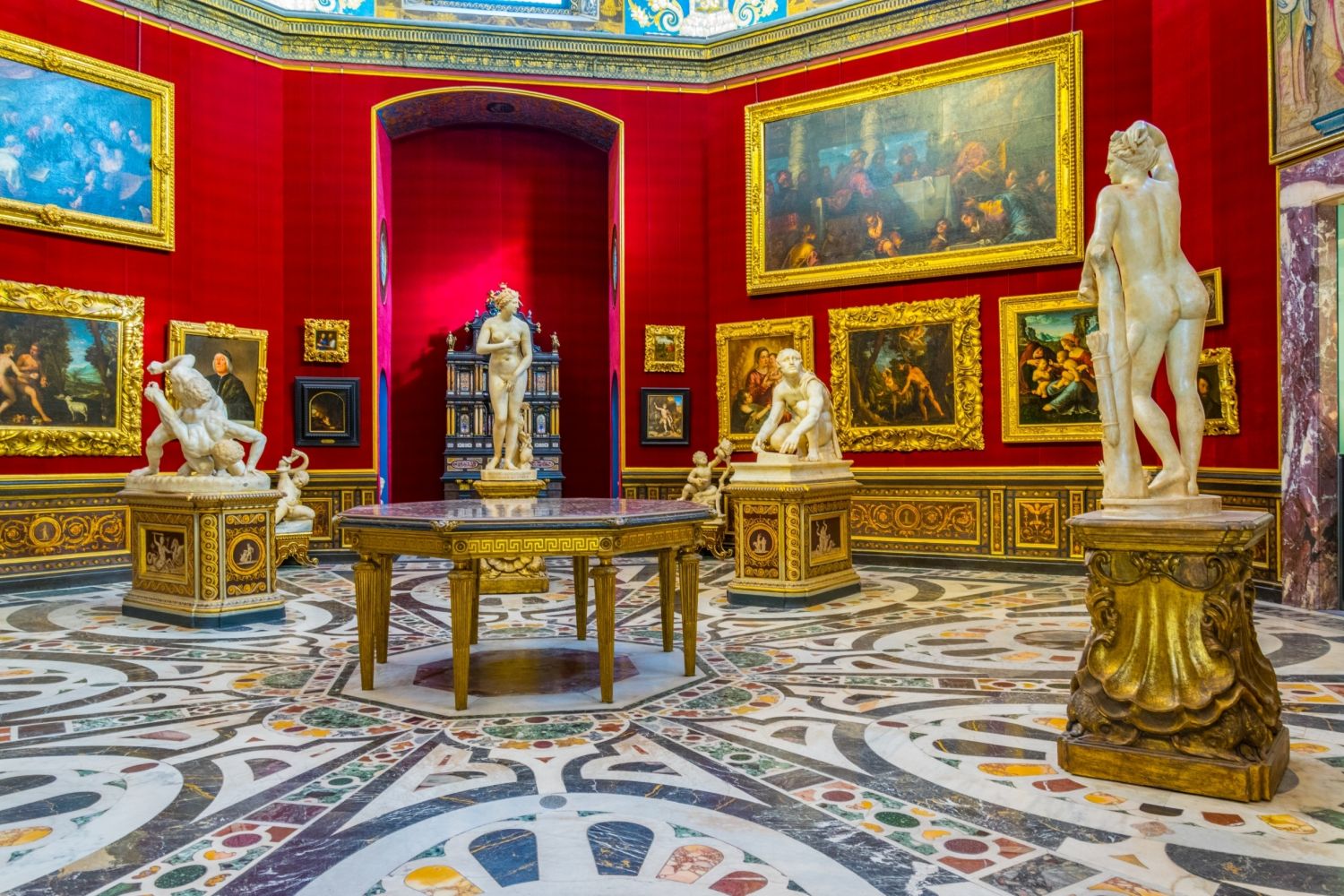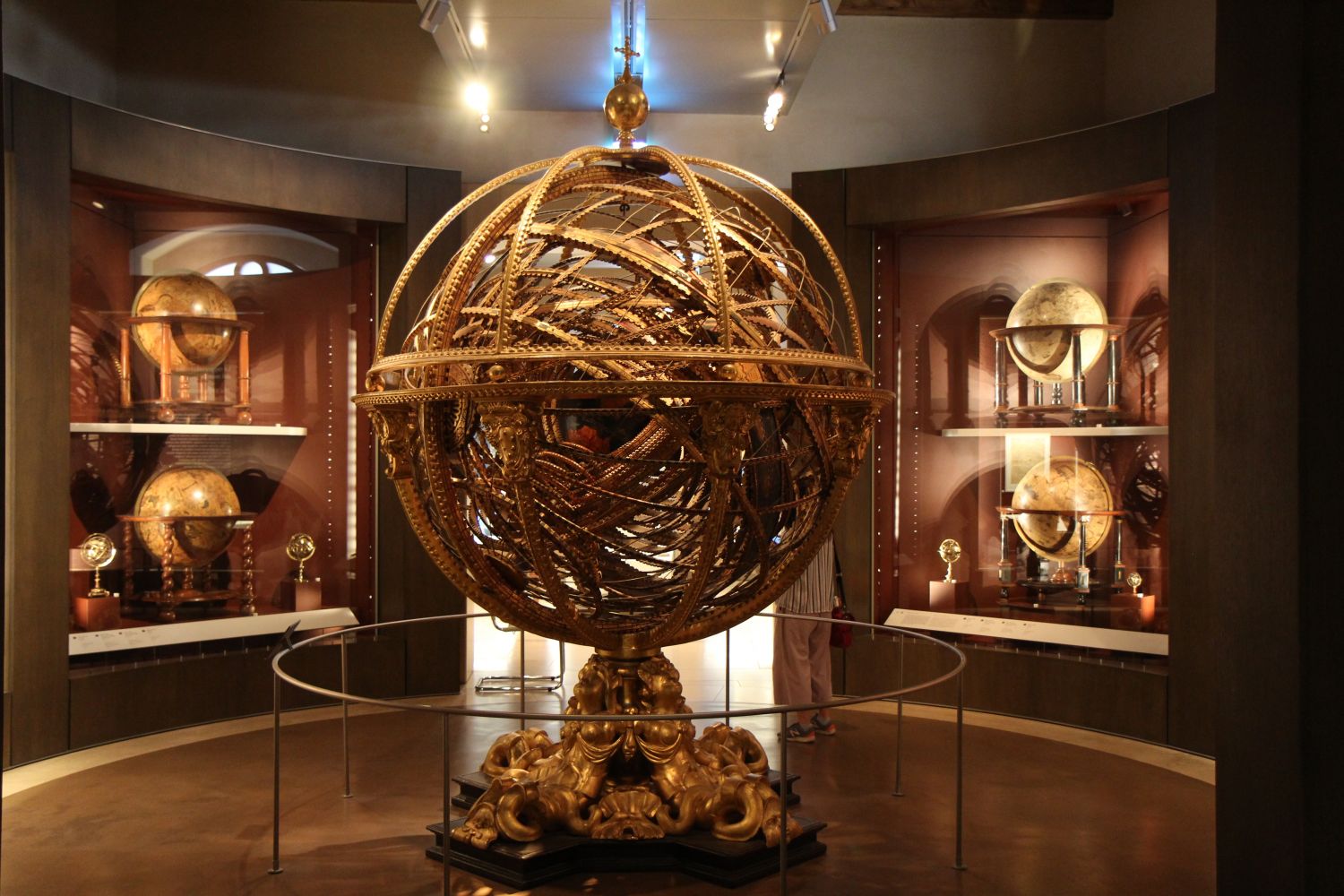
Pitti Palace and Boboli Gardens Tour
A day in court with the Medicis, the Lorraines and the kings of Italy..!
Explore










There was a poet, in 1722, who made fun of the andrienne - otherwise known as the robe à la française or the “sack back gown” -, especially of dames going to the bathroom wearing it..! The andrienne was a sharp, low-cut corset dress, with a huge skirt supported by a side-hoop, or pannier: a flat, oval-shaped structure made from whalebone, that was extravagantly large. The train was hung from the woman’s shoulders in one extremely long piece of material. On the bust of the dress, in front of the pièce d’estomac or "stomacher" (an elaborately decorated piece of triangular material), two opulent, lace-fringed sleeves completed the look: these were otherwise known as the engageantes.
It’s impossible to put into words the magnificence and intricacy of these dresses and their lacework: embroidery, fake flowers, ribbons…let alone how much dirt they accumulated -and what type of dirt, when the ladies went to the toilet..! This is also evident in this painting I publish (François Boucher, La toilette intime -Une femme qui pisse-, about 1760, private collection), which documents a common occurrence where women who found themselves somewhere with no toilet – or couldn’t reach the toilet due to their bulky, inconvenient dresses – would use highly elegant portable chamber pots, which were then emptied by their servants. One of these “fancy” urinals, also known as bourdalue, is in the mind-blowing Villa La Petraia (Castello, Florence), once belonging to the Medici family and later home to the Savoy Royal family like Palazzo Pitti (Pitti Palace)..!
They are to be found in the Museum of Costume and Fashion – although they are not always on display – and at the Stibbert Museum.
You can also admire paintings of these dresses in the Museum of Costume and Fashion, on paintings, such as in the portrait of Maria Luisa di Parma (1765). You can also see depictions of the dresses at the Gallery of Modern Art, in Wilhelm Berczy’s 1782 interpretation of the Grand Duke Pietro Leopoldo d’Asburgo-Lorena and his family (the duke’s wife, Maria Luisa di Borbone, boasts a green robe à la française). You can also find these dresses depicted on delicate porcelain statues, like those at the Porcelain Museum..!
Within these works, and others from the 18th Century that can be found in these Florentine museums (for example, the 1745 portraits of Luigi XV Adelaide and Enrichetta’s daughters Diana and Flora by Jean-Marc Nattier in the Royal Apartments of the Palazzo Pitti, or in the 1723 portraits of the Duke of Modena’s daughters by Rosalba Carriera, you can notice a radical change in the perception of female beauty. During the 1700s, a woman had to be pale, petite and frail to be beautiful, appearing older by using whitening face powders, and white or grey wigs. Here, we are at the opposite end of the scientific spectrum of beauty from Rubens (who lived and worked the century before), which is evident in the Flemish painter’s masterpieces The Consequences of War, in the Galleria Palatina (1637/1638), and The Portrait of Isabella Brant (1625/1626), in the Uffizi Gallery: both beautiful, blonde women, cheerful, healthy and full of life (in the Rape of the daughters of Leucippus at the Alte Pinakothek in Munich, also by Peter Paul Rubens, one of the two female protagonists – both nude – has exactly thirty-two “cushions” of fat, from her breast to her stomach)..! We can even see fashion changing drastically: the harsh shapes inspired by 17th Century Spain, which are almost always either in tones of black or dark colours, have been immortalised in many portraits of the women of the Medici house – works by Joost Suttermans in the Uffizi Gallery, the Palatine Gallery, the Royal Apartments and the Casa Martelli Museum – morphed, over time, into the bright pastel dresses of 18th Century France, generously displaying the women’s cleavage, forearms and ankles.
This transformation of women’s bodies and fashion from the 1600s to the 1700s can be read also as a parallel movement to that of the culinary movement..!
17th Century cuisine was grand, based on the idea of excess and theatricality in both the flavours and the presentation of the dishes: 18th Century gastronomy, however, was essentially a mere “nibbling” of exotic appetizers and canapes.
Lunedì 03 agosto 2020
